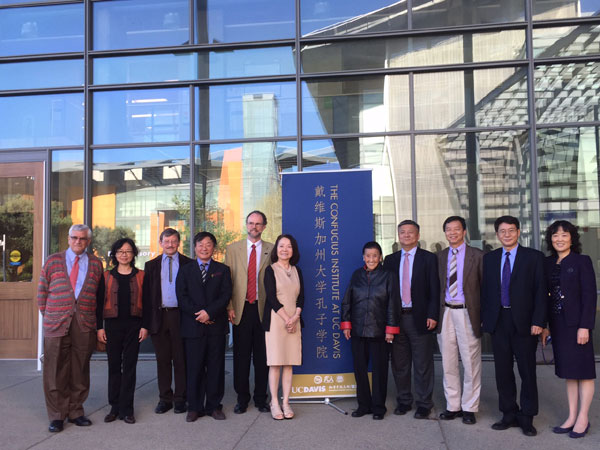 |
|
Academics as well as food and beverages industry professionals attend a conference on history and modern appreciation of "Jiu," or Chinese alcoholic beverages, held by the Confucius Institute at UC Davis on Thursday. Provided to China Daily. |
The day-long symposium, entitled "Understanding Jiu: The History and Culture of Alcoholic Beverages in China," started with the oldest archaeological data and ended with the current explosion of interest in quality grape wine in China.
In his speech on China's ancient fermented beverages, Patrick E. McGovern, scientific director at the University of Pennsylvania Museum in Philadelphia, illustrated the bio-molecular archaeological approach behind the discovery of the most ancient, chemically-attested alcoholic beverage in the world, recovered from a Neolithic tomb site in Jiahu, in China's Henan province, dating back to 7,000 BC.
This discovery dates to almost 2,000 years earlier than the hitherto discovered most ancient wine production in the Middle East, he said.
A mixed fermented beverage of rice, hawthorn fruit/grape and honey was reconstructed on the basis of the analyses of the pottery recovered from the Jiahu site.
Chateau Jiahu, the earliest alcoholic beverage from China and some other ancient beverages have been recreated by Delaware-based brewing company Dogfish Head Craft Brewery, according to McGovern.
The ancient Chinese made a unique contribution to alcoholic beverage-making by using specific grains, especially rice and millet, whose carbohydrates were broken down into simple and fermentable sugars by mold saccharification or amylolysis, he said.
He also proposed that the mass production and precise formulation of a range of fermented beverages during the Neolithic period was likely a result of the domestication of plants and the process of fermentation between western and eastern Asia.
Xu Yan, vice-president of China's Jiangnan University, presented the history and technology of Baijiu (white liquor) and Huangjiu (yellow liquor), which have been produced for more than 5,000 years in China.
Despite is long history of liquor production, China is by far the leading nation for beer production and consumption, said Xiang Yin, group director of brewing raw materials for SABMiller, the world's second-largest brewer.
In 2014, there were 419 breweries in China, producing 492 million hectoliters a year, more than double the consumption in the US, Yin said.
During the period from 1980 to 2003, beer became a very popular drink, considered more "nutritious" than the traditional Chinese Jiu. "Looking forward, beer consumption still has high potential to grow as the per capita consumption rate is relatively low, only at 36 liters, less than half of that in the US," Yin said.
The event, organized by the Confucius Institute at UC Davis, featured other speakers and experts in aesthetics, history and technology, who discussed different facets of wine and other alcoholic beverages, including the production and use of alcoholic beverages in traditional and modern China.
The Confucius Institute at UC Davis, established in September 2013, is the only one of its kind devoted to the Chinese food and beverage culture.
liazhu@chinadailyusa.com